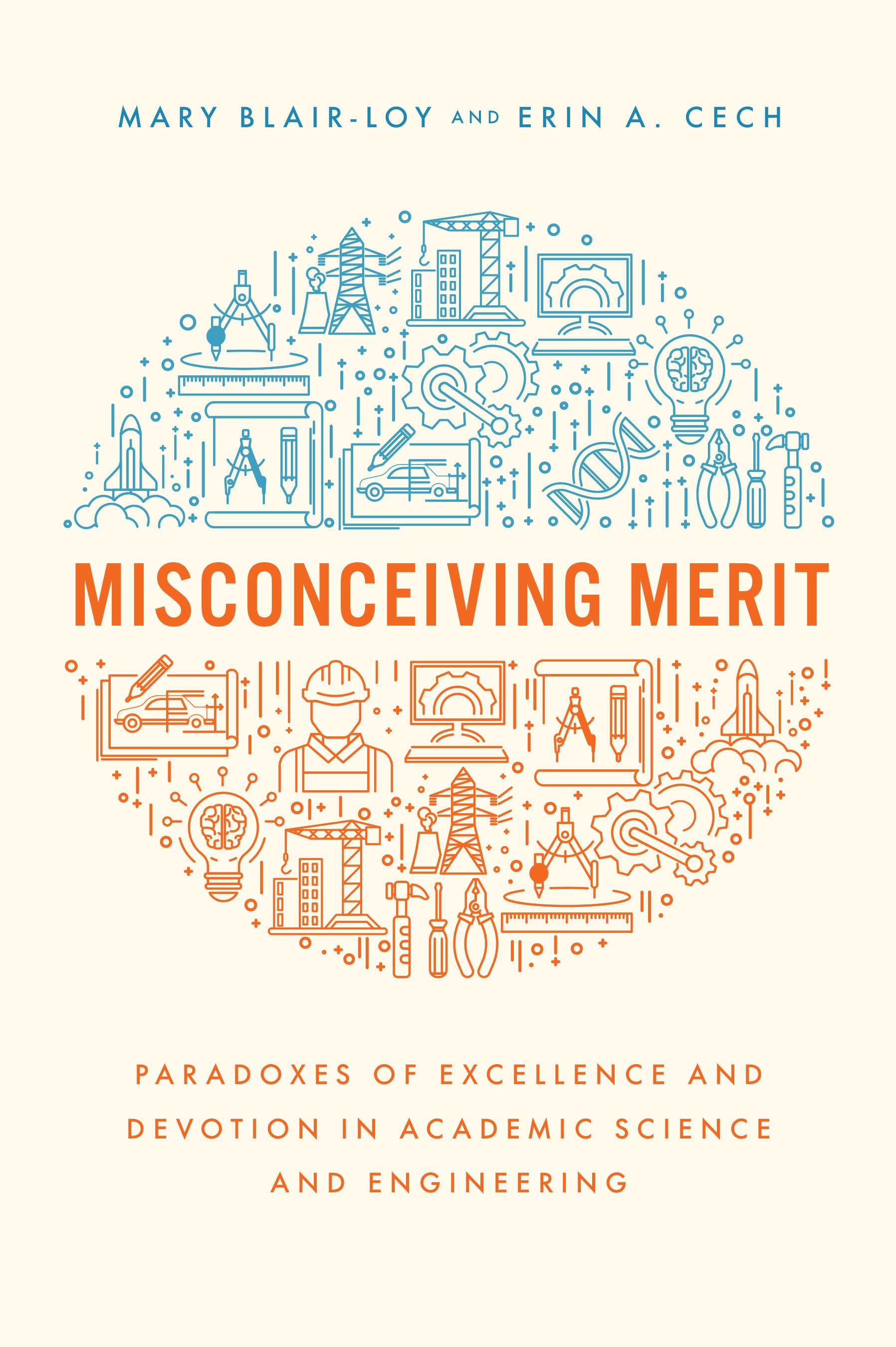Books: Misconceiving Merit
BUY THIS BOOK
Misconceiving Merit: Paradoxes of Excellence and Devotion in Academic Science and Engineering
University of Chicago Press, 2022
> Winner of the 2023 AERA (American Educational Research Association) Outstanding Publication Award in Higher Ed. (Division J)
This book addresses a paradox: How does academic STEM, which reveres meritocracy, produce outcomes in which women, racial minority, and LGBTQ academics are systematically underrepresented and devalued? Most research studies individual- and interactional-level biases. In contrast, Mary Blair-Loy and Erin Cech investigate how core content in academic STEM culture is venerated by faculty yet reproduces inequality.
Using multiple datasets and methods, they theorize and investigate two cultural schemas faculty use to understand merit. In the “schema of scientific excellence,” individual brilliance and assertive self-promotion are prized, while valuing mentoring and diversity is devalued. The characteristics of excellence are likely to be automatically assumed of white and Asian heterosexual men but overlooked when assessing Black or Latinx men and women, white women, and LGBTQ faculty. For the same scholarly productivity, minoritized faculty often receive less respect and fewer rewards than white and Asian heterosexual men.
The “work devotion schema” demands single-minded allegiance to the scientific vocation and penalizes faculty with commitments to caregiving. The book finds that mothers are as productive as fathers and nonparents yet paid less. In short, when faculty use these schemas as yardsticks, they mis-measure merit. These schemas not only reproduce unfair outcomes, they also hinder innovation.
This extended, multi-method case study of all academic STEM faculty in an R1 (research intensive) university combines administrative and bibliometric data with a detailed survey, plus in-depth interviews with 85 professors. The authors find further evidence of these schemas in secondary data from 7,000+ academic scientists in all types of universities across the U.S.
The book sets out a blueprint for social scientists studying culture and inequality in other contexts. It is full of analytical insight and empirical advances useful for scientists and for leaders in higher ed.
Presentations
Author Meets Readers Panel, Work-Family Researchers Network Biennial Meetings in Montreal, Canada
June 20-22, 2024
Authors Meet Critics Panel, Work2023 Conference in Turku, Finland
August 2023
Misconceiving Merit in Academia
January 2023
